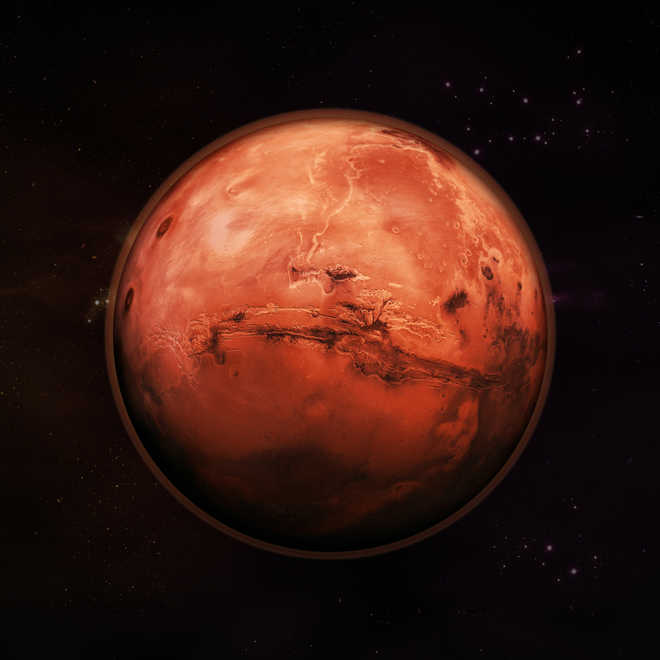
The Hubble observations were intended to photograph Mars, and the moon’s cameo appearance was a bonus, scientists said. Representational image
Washington, July 21
NASA’s Hubble Space Telescope has beamed back images of the tiny Martian moon Phobos in its orbital trek around the red planet.
Over the course of 22 minutes, Hubble took 13 separate images, allowing astronomers to create a time-lapse video showing the diminutive moon’s orbital path.
The Hubble observations were intended to photograph Mars, and the moon’s cameo appearance was a bonus, scientists said.
A football-shaped object just 26x21x17 kilometres, Phobos is one of the smallest moons in the solar system.
The moon completes an orbit in just seven hours and 39 minutes, which is faster than Mars rotates.
Rising in the Martian west, it runs three laps around the Red Planet in the course of one Martian day, which is about 24 hours and 40 minutes.
It is the only natural satellite in the solar system that circles its planet in a time shorter than the parent planet’s day.
About two weeks after the Apollo 11 manned lunar landing on July 20, 1969, NASA’s Mariner 7 flew by the Red Planet and took the first crude close-up snapshot of Phobos.
On July 20, 1976 NASA’s Viking 1 lander touched down on the Martian surface. A year later, its parent craft, the Viking 1 orbiter, took the first detailed photograph of Phobos, revealing a gaping crater from an impact that nearly shattered the moon.
Phobos was discovered by Asaph Hall on August 17, 1877 at the US Naval Observatory, six days after he found the smaller, outer moon, named Deimos.
Both moons are named after the sons of Ares, the Greek god of war, who was known as Mars in Roman mythology.
Phobos (panic or fear) and Deimos (terror or dread) accompanied their father into battle.
Close-up photos from Mars-orbiting spacecraft reveal that Phobos is apparently being torn apart by the gravitational pull of Mars.
The moon is marred by long, shallow grooves that are probably caused by tidal interactions with its parent planet. Phobos draws nearer to Mars by about 6.5 feet every hundred years.
Scientists predict that within 30 to 50 million years, it either will crash into the red planet or be torn to pieces and scattered as a ring around Mars.
Orbiting 5,954 kilometres above the Martian surface, Phobos is closer to its parent planet than any other moon in the solar system. — PTI



























